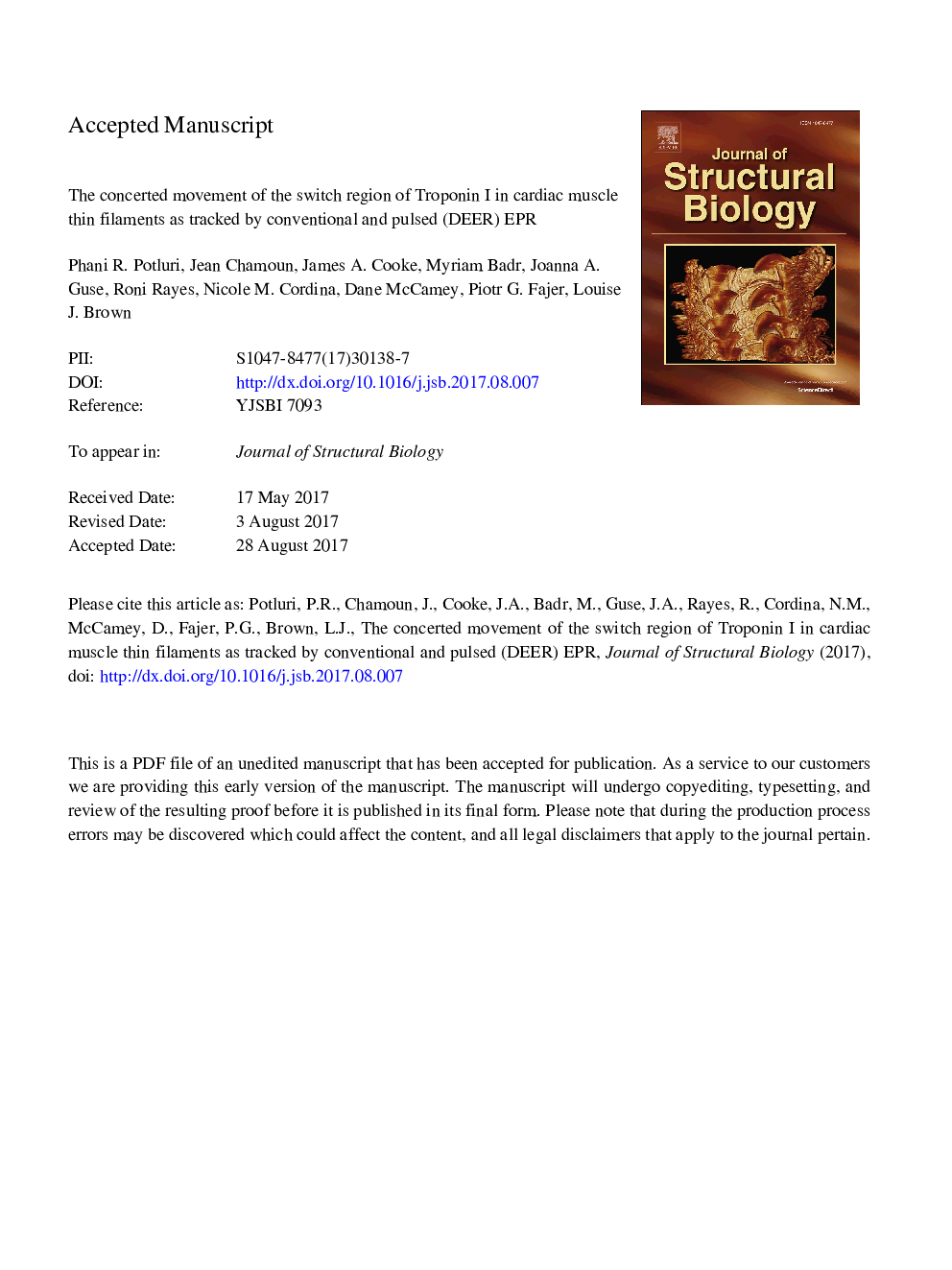| Article ID | Journal | Published Year | Pages | File Type |
|---|---|---|---|---|
| 8648301 | Journal of Structural Biology | 2017 | 38 Pages |
Abstract
The absence of a crystal structure of the calcium free state of the cardiac isoform of the troponin complex has hindered our understanding of how the simple binding of Ca2+ triggers conformational changes in troponin which are then propagated to enable muscle contraction. Here we have used continuous wave (CW) and Double Electron-Electron Resonance (DEER) pulsed EPR spectroscopy to measure distances between TnI and TnC to track the movement of the functionally important regulatory 'switch' region of cardiac Tn. Spin labels were placed on the switch region of Troponin I and distances measured to Troponin C. Under conditions of high Ca2+, the interspin distances for one set (TnI151/TnC84) were 'short' (9-10Â Ã
) with narrow distance distribution widths (3-8Â Ã
) indicating the close interaction of the switch region with the N-lobe of TnC. Additional spin populations representative of longer interspin distances were detected by DEER. These longer distance populations, which were â¼16-19Â Ã
longer than the short distance populations, possessed notably broader distance distribution widths (14-29Â Ã
). Upon Ca2+ removal, the interspin population shifted toward the longer distances, indicating the release of the switch region from TnC and an overall increase in disorder for this region. Together, our results suggest that under conditions of low Ca2+, the close proximity of the TnI switch region to TnC in the cardiac isoform is necessary for promoting the interaction between the regulatory switch helix with the N-lobe of cardiac Troponin C, which, unlike the skeletal isoform, is largely in a closed conformation.
Keywords
Related Topics
Life Sciences
Biochemistry, Genetics and Molecular Biology
Molecular Biology
Authors
Phani R. Potluri, Jean Chamoun, James A. Cooke, Myriam Badr, Joanna A. Guse, Roni Rayes, Nicole M. Cordina, Dane McCamey, Piotr G. Fajer, Louise J. Brown,
